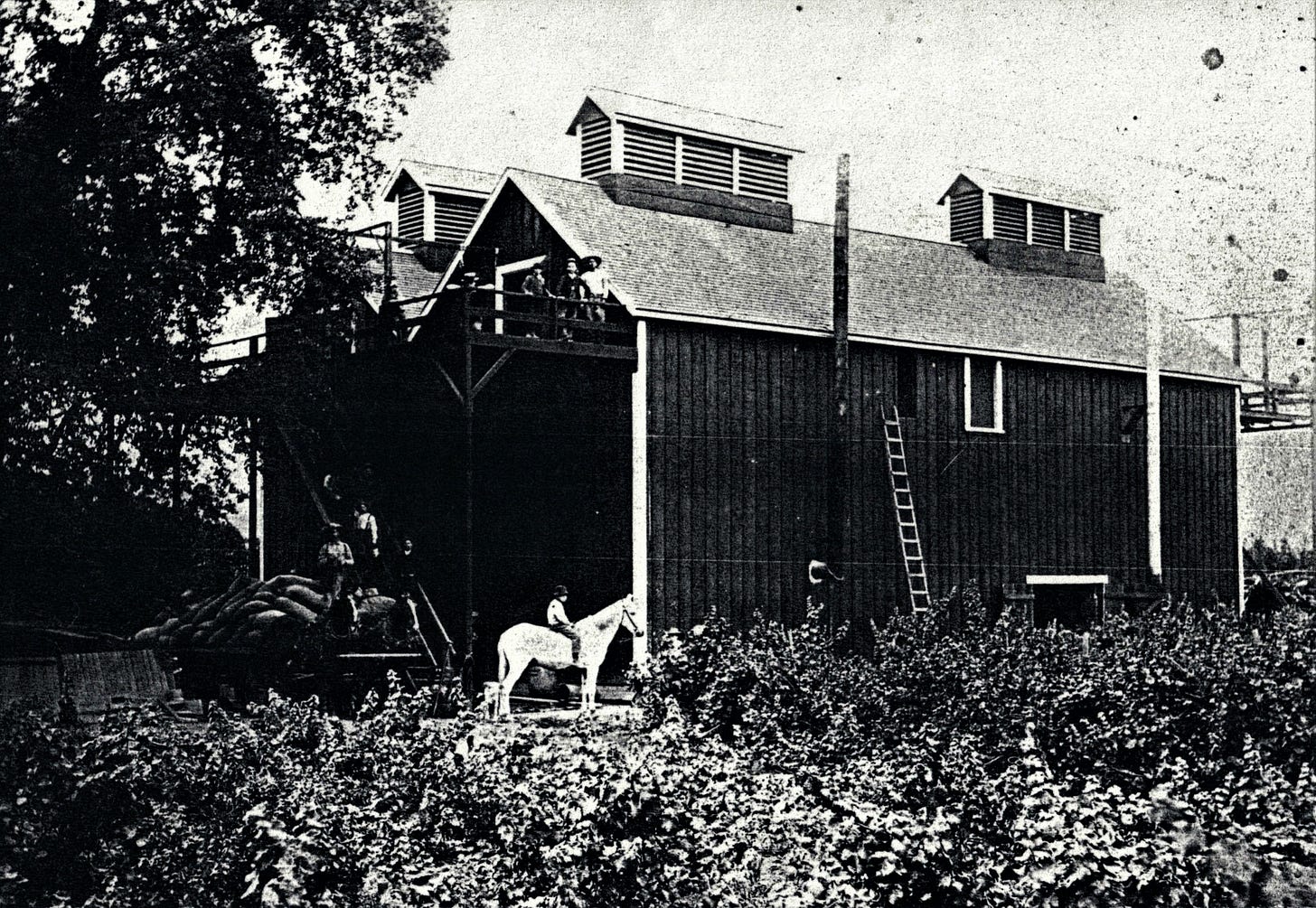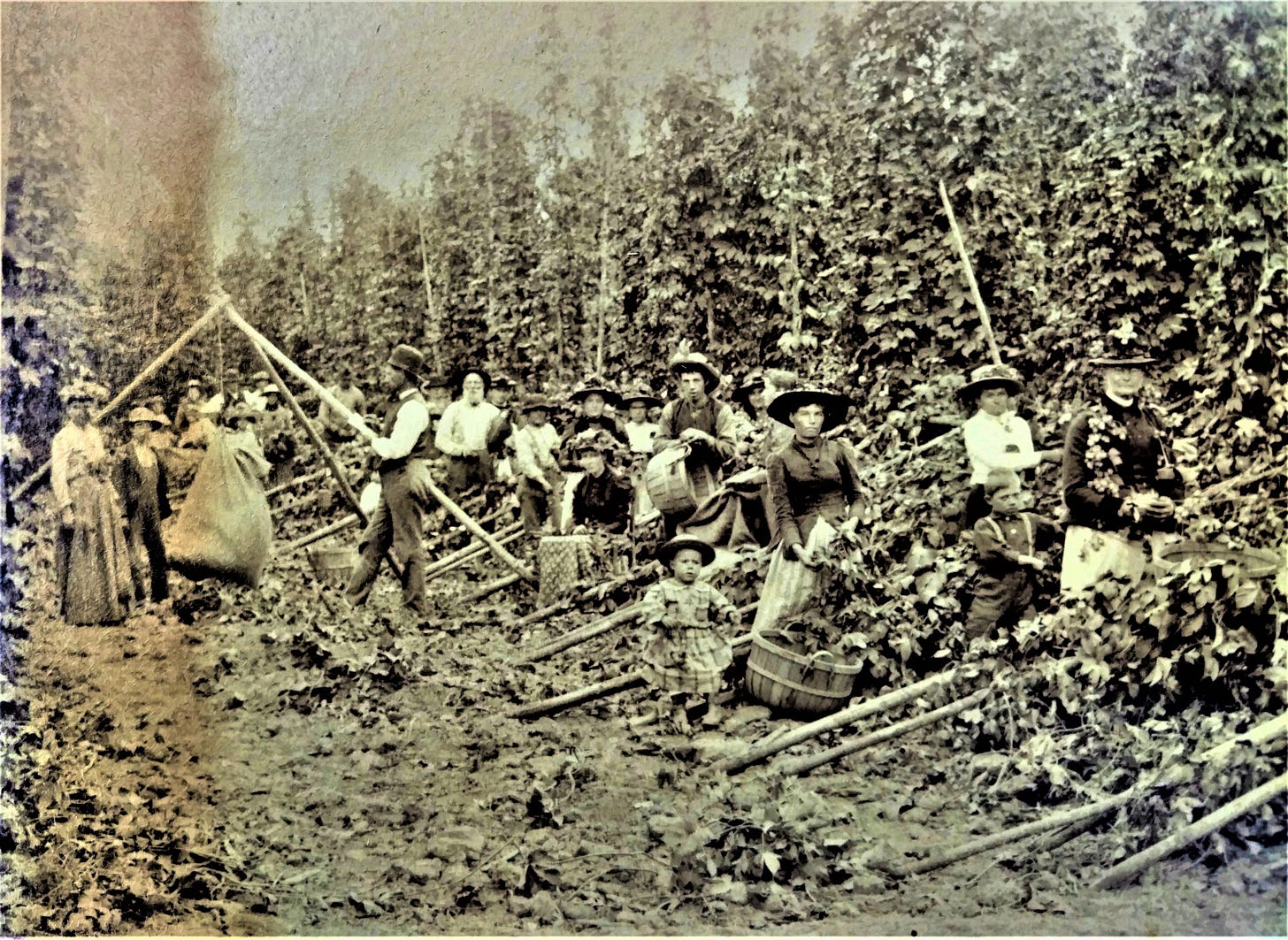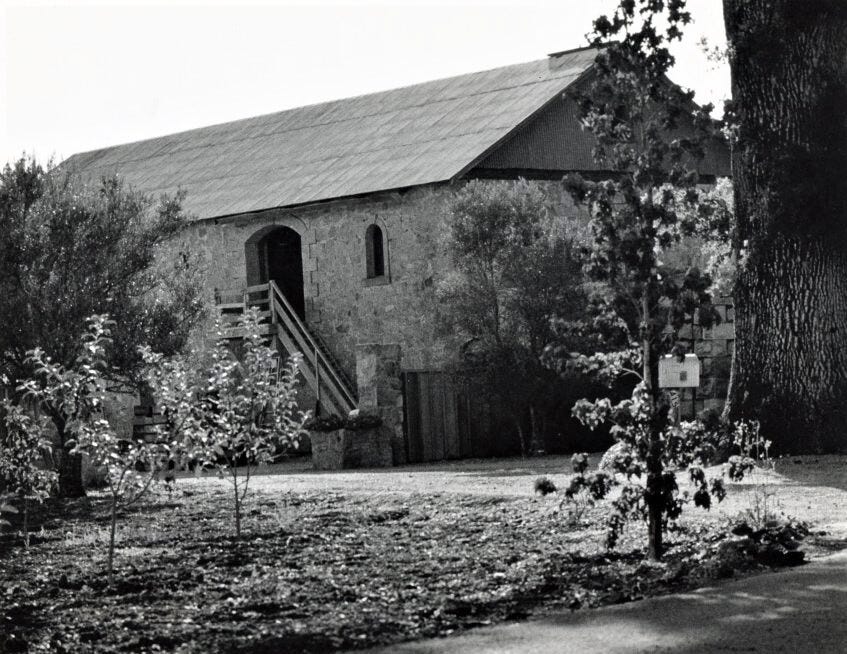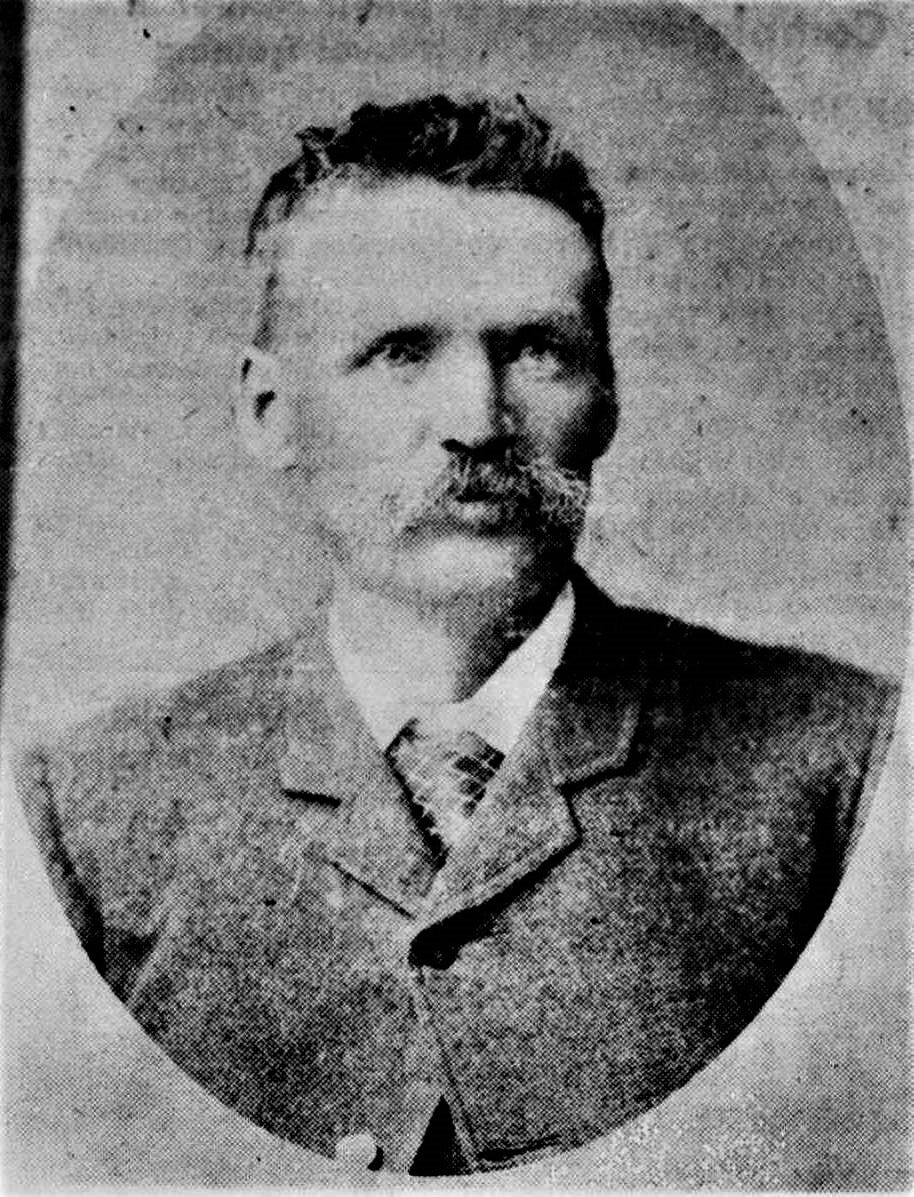The Dowdells: from Emerald Isle to St. Helena in 1869
By Mariam Hansen
NAPA VALLEY, Calif. — James Dowdell, who would come to be an outstanding citizen of St. Helena, was born Aug. 29, 1845, in County Louth, Ireland, where he lived until he was 19. He then moved to England and found employment in a rolling mill, which lasted for nine months. He next traveled to New Zealand, where he farmed for three years before leaving on a schooner bound for California. His boat docked in San Francisco on July 28,1868, but he only stayed for a few months. On the move again, he headed for Philadelphia, arriving Nov. 7, 1868. There he married Elizabeth Corbally, a native of County Monaghan, Ireland.

In February 1869, the couple set off for the Golden State by way of Panama. They boarded a ship to Colón, Panama, then crossed the Panama jungles by way of the train, which was available after 1855, instead of the mules that most travelers used. Ships departed from Panama City for San Francisco.
Dowdell first worked in San Francisco, but after that he worked for Civil War Gen. Erasmus Darwin Keyes on his ranch near St. Helena, Edge Hill. This property on Sulphur Springs Avenue is where the winery, distillery and carriage house (known as “the White Barn”) of the estate still stand. Dowdell worked for the general for three years.
During this time — 1869 to 1872 — having saved his earnings, Dowdell purchased 10 acres of land from William and Frances York. After one year he sold it and bought 25 acres from Dr. George Crane. In 1875 he added 36 acres more to his estate, making 61 acres that he used for hop- and grape-growing. By this time the couple had three sons: James W. (1869), Arthur B. (1870) and Edward (1874). Four more children later joined the family: Walter (1875), Albert (1877), Joseph (1880) and Katherine (1883).
A disastrous midnight fire occurred at the farm in June 1885, destroying a new cellar, two large barns, two hop houses and a wagon shed together with large quantities of hay and 118 bales of hops. Losses were set at more than $7,000, only one-half of which was covered by insurance.
“The fire was probably the work of an incendiary,” the newspapers surmised. Dowdell hired many Chinese workers to pick and process his hops, and the fire may have been a message from locals who were opposed to foreign labor.
“All the hops raised in Napa County are grown in or near St. Helena and within the limits of five yards,” reported the St. Helena Star in 1886. “The yield this year was light, not averaging much over half a crop. The figures as given us are as follows: James Dowdell, 15 acres, 13 tons; David Cole & E. Simpson, 12 acres, 10 tons; R.F. Lane, 16 acres, 8 tons; P. Elting, 12 acres, 8 tons; Storey Bros., 30 acres — 8 acres at St. Helena and 22 at Rutherford, 10 tons. Total yield from 85 acres, 49 tons. A ton of green hops makes about 650 pounds dried and pressed. Chinamen are paid at the rate of $1.02 per Ib. for picking green hops, which makes the cost of picking alone average about $15 per ton for dry hops.”

During the grape harvest in October 1889 disaster struck again. Son Walter, then 15, had his hand and arm injured by a grape-crusher. Blood-poisoning resulted, and the boy died. Dowdell blamed the doctor, who sued for defamation and damages of $25,000.
In 1891 Dowdell made 320,000 gallons of wine, which he sold to the Cloverdale Wine Co. to be delivered after Jan. 1. Dowdell & Son (Arthur) leased the large Bourn cellar (later Christian Brothers, now Culinary Institute of America). The firm purchased all of W.B. Bourn's grapes for $14 per ton, which everyone conceded to be a fair price.
On April 13, 1895, a lawsuit was begun in the Superior Court — C. Carpy v. Dowdell & Son — which would end Dowdell’s winemaking career. Carpy foreclosed on a mortgage of $27,000 on certain wine that Dowdell & Son had allegedly contracted to sell to the California Wine Association. After being offered too low a price, Dowdell sold the wine to Fortune Chevalier of San Francisco (founder of Spring Mountain’s Chateau Chevalier). W.A. Mackinder was appointed keeper of the property in question, with bond fixed at $15,000.

It was true that Dowdell had sold 400,000 gallons of the wine to Chevalier & Co. of San Francisco. Chevalier immediately sold the wine to dealers in the eastern United States, but the wine was still stored in St. Helena in six railroad cars, ready for shipment. Dowdell asserted CWA had not kept good faith with him and therefore the alleged contract was void. Mackinder, the receiver, ordered the wine to be unloaded and hauled back to the cellar. All shipment of the wine was stopped and negotiations were underway for a compromise.
C. Carpy & Son won the case, and the court ordered a sheriff sale of 363,000 gallons to satisfy the judgment of $530,000. The sale brought $41,234, an average of 11.34 cents per gallon, which was considered a good price at a forced sale.
Dowdell appealed to the California Supreme Court, which heard his case two years later in January 1897 and reversed the decision of the lower court. But Dowdell was not done. Two months later he sued Carpy and CWA for damages of $950,000. Vintners throughout the state watched the litigation carefully.
Dowdell & Son charged the defendants with conspiracy, which resulted in their financial ruin. Dowdell & Son set forth that because of these acts they had lost their credit and business and were unable subsequently to buy grapes or make wine. Holding the defendants to be directly responsible for their misfortunes, Dowdell & Son demanded $50,000 damages. Dowdell won but never operated his winery again.

Instead, his company expanded their hops business to 55 acres. In 1899 they had a large crop of the best quality. However, finding laborers was a continuous problem. Women and children were used in that year. They raised the price of picking from 16 cents to 20 cents per barrel, or $1.25 per 100 pounds. Free transportation to the grounds was furnished.
When the hops were gathered they were placed in four large cars adjusted over the same number of furnaces and then covered by large pieces of canvas, a system of sulphuring patented by Dowdell & Son. After the hops were sulphured, the cars were pushed along an elevated track to a building 10 feet high, where the hops were stored for curing. In about two weeks the crop was baled and ready for market.
They tried another solution to the labor problem in 1901. Father Crowley of the Youths’ Directory of San Francisco brought 32 boys to pick hops. The boys ranged in age from 12 to 18. An experienced cook came with them and prepared three meals for them every day. In February 1902 Dowdell & Son sold 38 tons of hops to buyers who said it was the finest they ever handled.
Dowdell died on March 31, 1902, of typhoid fever. His funeral was held on April 3. Elizabeth Dowdell died in 1931. The entire family is buried in St. Helena Cemetery.
Today Dowdell’s home, winery and brandy house still exist. The owner since 1971, Charlie Crocker, grows fine-quality wine grapes on the same terroir. With partner winemaker Pam Starr, the grapes are crushed at Crocker-Starr Winery on the lane named in Dowdell’s honor.
Mariam Hansen is research director for the St. Helena Historical Society.





Love reading about the history of Napa.